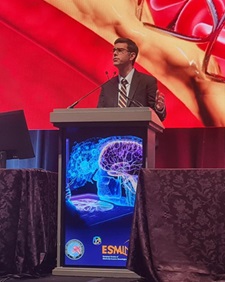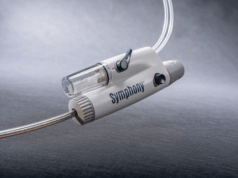
Imperative Care has announced that late-breaking data from the Imperative trial were presented recently at the ongoing Society of NeuroInterventional Surgery (SNIS) annual meeting (22–26 July, Colorado Springs, USA). The prospective, multicentre clinical trial evaluated the clinical benefits of the Zoom reperfusion system, including aspiration with 0.088-inch catheters, for the treatment of ischaemic stroke.
The aforementioned data were presented by William Mack (University of Southern California, Los Angeles, USA), co-principal investigator of the Imperative trial.
“The observed data showed all three prespecified performance goals were met,” said Mack. “These data suggest a lower rate of rescue therapy than prior thrombectomy trials, and may demonstrate that intracranial positioning of a super-large-bore catheter could influence or reduce the need for stent retrieval rescue therapy as well as decrease costs. Additionally, the very low rate of symptomatic intracranial haemorrhage coupled with high rates of reperfusion are promising. I look forward to the potential implications for my practice and the patients I treat.”
The Imperative trial evaluated 260 patients who met inclusion and exclusion criteria and were treated across 26 US institutions from October 2021 to March 2024. Prespecified performance goals were established in conjunction with the US Food and Drug Administration (FDA) and 254 patients completed follow-up at 90 days.
Results from the trial demonstrated that the core-lab adjudicated rate of modified thrombolysis in cerebral infarction (mTICI) ≥2b reperfusion within ≤3 passes—without the use of any additional thrombectomy devices as rescue therapy—was achieved in 82.2% of patients (213/259). According to Imperative, this is similar to prior trials used to support US FDA 510(k) clearance for reperfusion indications (82.4%; 1,832/2,246). In addition, stent retrieval rescue therapy was used to achieve mTICI ≥2b reperfusion in only 5.5% of cases (13/238).
Data also showed that the median time from groin puncture to mTICI ≥2b reperfusion using the Zoom reperfusion system was 19 minutes. Additionally, the core-lab adjudicated rate of symptomatic intracranial haemorrhage was 2.3% (6/260), which is lower than the rate of prior trials (4.7%; 116/1,777), and the rate of independently adjudicated dissection and vessel perforation was 1.2% (3/260), which is similar to prior trials (1.3%; 14/933).
“We are pleased with the preliminary results of the Imperative trial,” said Fred Khosravi, chairman and chief executive officer of Imperative. “Our mission to elevate care for patients suffering from stroke and other devastating vascular diseases extends beyond the operating room. We are happy to advance the field through our commitment to validating our innovations with robust clinical data.”
“At Imperative Care, we are focused on developing technologies designed for intracranial access, with the goal of enabling physicians to perform better procedures with faster clot removal using fewer devices, as demonstrated in previous clinical studies of the Zoom stroke solution—and now further supported by initial findings from the Imperative trial,” added Ariel Sutton, general manager of Imperative’s Stroke business. “These data suggest this approach is poised to be better across a number of endpoints. We look forward to our continued efforts to elevate stroke care through our sustained commitment to clinical evidence and meaningful innovation with the goal of improving patient outcomes.”











